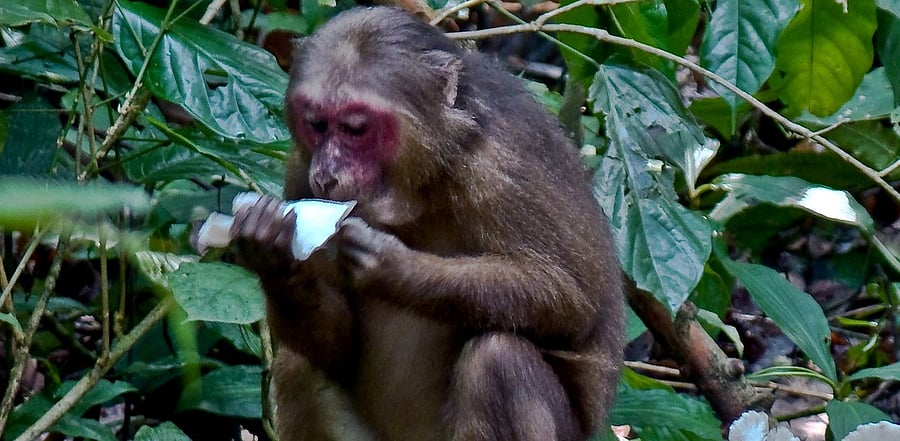
In what could cheer wildlife lovers, researchers have documented the largest troop of wild stump-tailed macaque spotted ever, in Hollongapar Gibbon Sanctuary, a small and isolated lowland tropical rainforest patch in the Upper Brahmaputra Valley in Assam.
The team of researchers spotted an unusually large troop of 194 stump-tailed macaques during a survey in the sanctuary in December 2016. A research paper on their finding has recently been published in the Journal of Biosciences.
"This is the largest wild group of the species recorded anywhere across its distribution range," Narayan Sharma of the department of environmental biology and wildlife sciences, Cotton University in Guwahati, who was part of the team, told DH.
Apart from Cotton University, the team included researchers from National Institute of Advance Studies, Bengaluru, Corbett Foundation, Kaziranga, Gauhati University, Wildlife Trust of India, North Eastern Regional Institute of Science and Technology, Itanagar, Indian Institute of Science Education and Research, Kolkata, Centre for Wildlife Studies, Bengaluru and Environ, an NGO based in Guwahati.
The 20.98-sqkm Hollongapar, having more than 350 stump-tailed macaques, is perhaps one of the last strongholds of the species, not only in India, but possibly in southern Asia as well, they said.
Stump-tailed macaque, also known as bear macaque is found in South Asian nations including China, Vietnam, Malayasia, Thailand, Myanmar, Cambodia and Laos. In India, it is found only in the south of the river Brahmaputra in Assam, Meghalaya, Arunachal Pradesh and some other parts of the Northeast.
The species has long, thick, dark brown fur covering its body but its face and short tail are hairless. "Unlike species in open habitats, those in forests tend to have smaller groups, and this becomes further accentuated in small and fragmented forest patches," researchers said in the paper.
The researchers cited two major possible reasons behind such a large group: omnivorous diet and predation pressure. Its food ranges from fruits, shoots, tubers, leaves of various shrubs, trees, climbers, and the abundant bamboo to fungi, insects, slugs and even frogs. "This would then imply that the broad spectrum of items taken by stump-tailed macaques will far outstrip the relatively narrow diet regimes of the other, more diet-specialist, primates that are sympatric with the species in this forest, including the northern pig-tailed macaque, capped langur and the hoolock gibbon," they said.
The stump-tailed macaque in Hollongapar faces predation pressure from the common leopard Panthera pardus, clouded leopard Neofelis nebulosa, domestic dogs and raptors. "The density of common leopards had also arisen in recent years due to the release of most leopards, rescued from the neighbouring human habitations, in this forested patch by the forest department," the researchers said.
